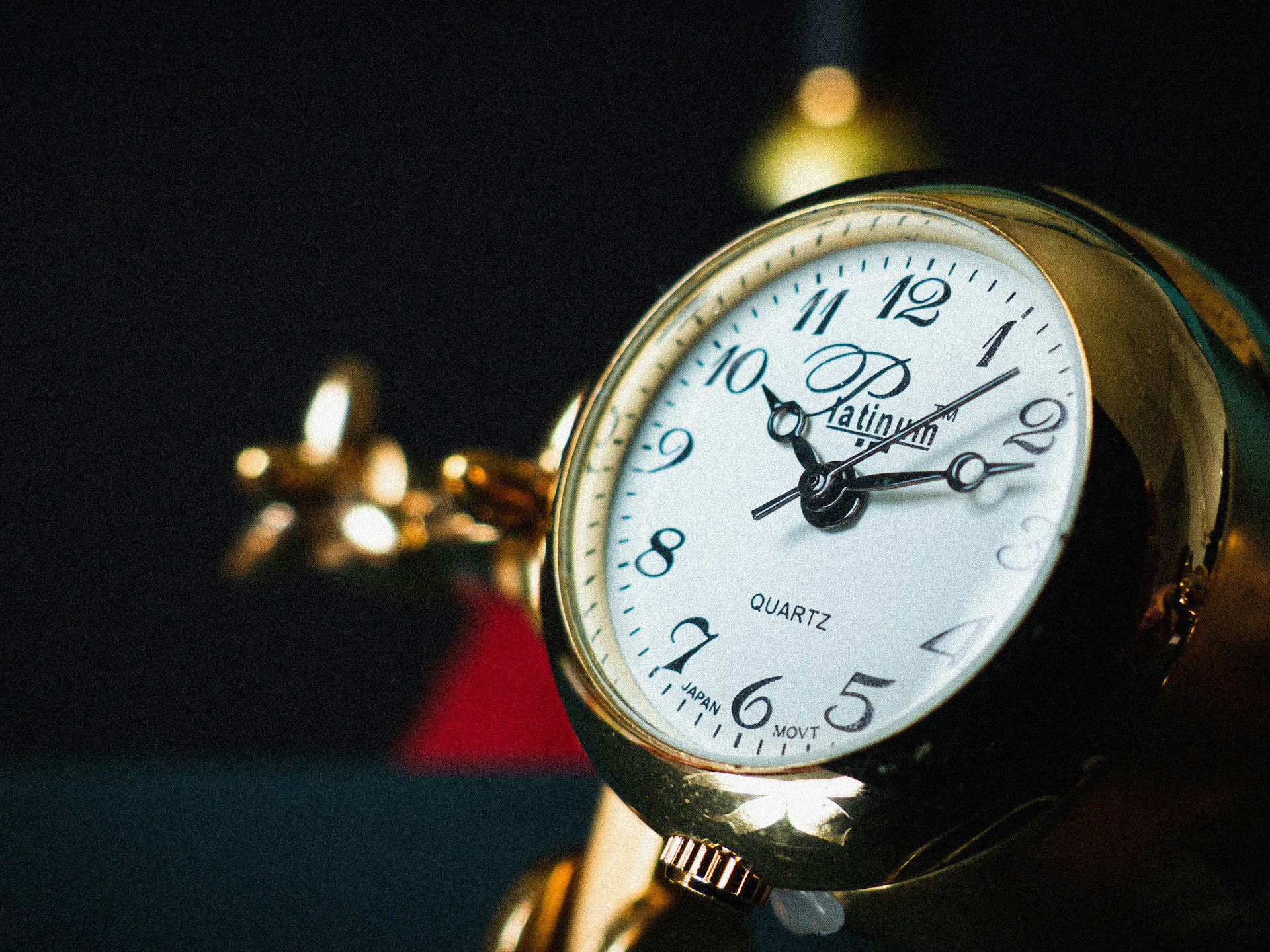When you have $1000 to spend on your next watch, you often face the dilemma of automatic mechanical vs quartz movement. Both types of movements have advantages and disadvantages that extend beyond just telling time. An automatic mechanical watch represents the traditional art of horology, featuring a mechanical watch movement with gear trains, springs, and oscillators that produce a sweeping second hand—all an engineering feat with greater emotional resonance. Quartz watches, on the other hand, have a quartz movement that incorporates advanced electronic components, produce remarkably high accuracy, and require little maintenance, appealing to the functional user.
For a curated list of elegant watches that won’t break the bank, explore Best Luxury Watches Under $1000 – reptime.
Ultimately, the decision to choose one watch over another comes down to what the user values most—either the aesthetics or tactile experience of a mechanical movement or the accuracy and dependability of a quartz movement. A mechanical watch may require a higher maintenance routine, and you can establish an emotional connection to the artistry of a timepiece. A quartz watch may be less interesting but will produce long-term accuracy and require little maintenance. By framing the type of movement and defending it using opportunity costs, you can more easily interrogate the trade-offs between the two movements. The purpose of this chapter is to deepen your understanding of what it means to own a high-quality watch for $1000 that interlaces technical sophistication and emotional resonance, but more importantly invites you to appreciate some of the nuance of watch ownership.
How Do Automatic Mechanical and Quartz Watches Differ Under $1000?
Watches in the $1000 price segment mainly reside in two categories based on their movements—which means their mechanism of telling the time. While both mechanical and quartz watches can tell the time, they operate under completely different principles, which give the user two very different experiences and highly different customer preferences. When you put on an automatic mechanical watch, the watch is powered by movement. If you wear the watch, your wrist will cause a rotor to spin inside the watch, which winds a mainspring—an elastic coil of metal that stores energy. This energy creates the power necessary to activate the gear train, escapement, and balance wheel, which oscillates at a consistent rate (typically between 28,800 and 21,600 vibrations per hour). For example, Seiko’s NH35 or Miyota 9015 are two “calibers” that are well-engineered to create an automatic movement, while also making it reliable, rugged, and entry-level.
View Best Luxury Watches Under $1000 – REPTIME for More Details.
Quartz watches run on an entirely different basis; they’re a very different mechanism altogether. Quartz watches utilize a small battery that powers an integrated circuit, then that circuit drives a piezoelectric quartz crystal, which oscillates at a high frequency (32,768 Hz) to produce a timed signal. Citizen’s Miyota Quartz or Seiko’s V137 are examples of dedicated movements that are known for their accuracy and longevity.
The main differences can be categorized as follows:
- Accuracy – Typically quartz movements will lose or gain no more than ±15 seconds per month because of the stable vibrational frequency in the quartz crystal. Mechanical calibers will vary but usually oscillate within ±5-10 seconds daily.
- Service and Maintenance – Automatic watches require periodic servicing every 3-5 years to be cleaned, lubricated, and calibrated, with costs normally between $150 and $400. Quartz movements will typically require a battery replacement every 1-3 years at a low cost; however, circuit failures do occur but are uncommon and usually lead to expensive repairs.
- Design and Feel – Automatic watches typically have an exhibition case back to showcase the intricate/automatic movements, thus making them naturally pleasing to the eyes and creating an emotional connection. Conversely, quartz will usually provide a lighter and smaller case for the user, thus making the watch better for active wearing purposes.
Having a basic understanding of the differences between automatic mechanical and quartz watches allows the creative collector and the casual watch wearer to make informed choices for the best timepiece for their lifestyle, aesthetics, and investment goals!
Why Is It Difficult to Decide Between These Movements on a $1000 Budget?
Choosing between mechanical and quartz watches is often confusing for many buyers in a $1000 price range because they have to weigh emotional values against practical needs. Emotional value guides many buyers. Mechanical watches are rooted in the rich heritage of horology and workmanship. The seconds hand gliding along with a mechanical mid-tier caliber quartz watch, like Seiko 6R15 or an ETA 2824, evokes a sense of artistry and practice. Whether winding a mechanical watch or looking at the finely finished movement in a glass display case, mechanical watches are tactile experiences that go beyond functionality.
Practicality favors quartz. Pure precision, trouble-free routine maintenance, and shock resistance are all advantages for the consumer who wants something to wear every day without thinking about it again. Many people like that all they need to do is change the battery every two years (Citizen Eco-Drive customers can attest to this; storage of charge, thanks to solar technology, can continue for even longer without routine adjustments). The real dilemma is balancing cost with sentiment. Mechanical watches generally have a more expensive long run, including service intervals and parts replacement. Quartz watches, although less expensive day-to-day, can lose value and could incur a failure due to the electronic components. This, ultimately, deliberately creates a personal opportunity cost: Do I care enough about owning a mechanically soul-suffering timeframe to pay for the ongoing expense of maintenance, or does it convey more practical value in quartz that can carry a busy utility? The answer will vary for each individual, making the choice individual in nature.
How Does Accuracy Affect the Choice Between Mechanical and Quartz at $1000?
In terms of timekeeping accuracy, quartz watches clearly have the upper hand. Most quartz movements, like the Seiko V157 and Citizen Miyota 1L45, are manageable to within approximately ±15 seconds per month—which is ideal for daily wear and professional use. Quartz movement accuracy is based on the frequency the quartz crystal oscillates, and the timing will have less variance over time as it is not significantly affected by anything other than temperature.
Mechanical movements, while captivating, are even more reliant on various factors to attain accuracy. Mechanical calibers, like ETA 2824 or Miyota 9015, are generally accurate to approximately ±5-10 seconds per day—sometimes more, especially if not properly regulated or impacted by temperature, positioning, or magnetic interference. Higher-end movements, like Grand Seiko 9S85 or highly accurate Swiss certification, may attain an accuracy deviation of about ±2 seconds per day—but this becomes less common at this level of price.
For users who need definite timing, such as an international traveler or professional planner, a quartz watch will give you guaranteed accuracy. Whereas, users of mechanical watches may also accept a daily variance—because it is simply part of the charm; a little reminder that the movement is living and breathing. Knowing the accuracy measurements allows users to understand reasonable expectations and lets users reflect on the importance of maintenance and external factors of timekeeping accuracy and consistent upkeep.
What Are the Real Maintenance and Repair Costs for $1000 Mechanical vs Quartz?
Ownership costs involve more than the initial expense of the item, particularly taking into consideration the nature of maintaining the watch long-term. For example, mechanical watches such as the Tissot Le Locle or the Longines Master Collection should have periodic servicing every 3-5 years. When the time comes for service, you will pay for a full dismantling of the watch, cleaning, lubrication, and adjustment. Thus, your cost is generally $200-$400 depending on the complexity of the movement, as well as the brand and service quality. Any repairs not previously scheduled—such as the need for new gear pivots or mainspring—would be an additional expense.
On the other hand, routine costs for quartz watches are minimal. For example, you will need a new battery every 1-3 years, which costs in the ballpark of $20-$50. It is also the case that components such as the circuit board or stepper motor should last over 10 years. A circuit board failure may signal a need for a more expensive repair other than just the battery replacement. A local repair shop may also provide some service, no matter how inexpensive it is for a quartz, but the downside is the potential damage to parts (as well as diagnosis) if not factory service.
Some of the repairs are unexpected, such as a cracked gear in an automatic or failure of the circuit or components in a quartz. This is usually the case with quartz watches that are exposed to humidity. A quartz watch that has been worn a lot and has been exposed to humidity may require extensive repair of the circuit if corrosion occurs. Mechanical watches, through the use of springs and gears, are complicated. They are typically built for it, but routine repairs are necessary to minimize extensive repairs later. Both types of watches require some careful attention; however, mechanical watches have a higher routine cost than quartz watches but can last many generations if maintained properly.
How Does Durability Influence the Mechanical vs Quartz Decision Below $1000?
Considerations for durability are likely to have an impact on your potential long-term satisfaction as a watch owner. Mechanical watches, such as the Hamilton Khaki Field Watch or Oris Aquis, are typically built with encased movements and shock-absorbing designs, such as the Incabloc or KIF anti-shock systems. However, the complex gear train and delicate escapement designs can still be affected by sudden high impacts or magnetism, leading to potential deviations or damage down the line.
Quartz watches are decidedly superior in resistance to impacts. The electronic circuits and batteries in quartz watches are less vulnerable to shocks and vibrations, which makes them more ideal for active lifestyles. Seiko Solar and Citizen Eco-Drive models are known for their durability and tolerance of environmental elements (e.g., humidity, temperature) without a performance drop. Regardless of the type of watch you choose, the resilience of mechanical watches depends on their build and ongoing maintenance. A fully sealed stainless-steel case, for instance, with some sort of protective shock mechanism, can weather the daily use of a working individual, while Aurora or other cheaper-quality quartz watches may break when dropped or exposed to moisture due to poor seals.
The choice of an effective watch style should fit your lifestyle and surroundings—someone who participates in adventuring, sports, or other activities that put a toll on a watch would consider a quartz over a mechanical timepiece, while a person whose life or work is mostly formal or casual wear would appreciate a mechanical watch for its beauty or heritage.
What Are the Actionable Pros and Cons of Each Movement Type at $1000?
When contemplating and comparing these two apple and orange classes of watches, consider the following information:
Mechanical watches, like the Tissot Le Locle (my favorite) or Hamilton Jazzmaster, offer an old-world charm to traditional mechanics and craftsmanship by displaying the mechanics of the movement through an open sapphire caseback. Aside from their aesthetic value, they often hold prestige in addition to their craftsmanship status. However, mechanical watches require additional maintenance, with a service estimate of between $200–$400 every 3–5 years. A mechanical watch can also be sensitive to shocks and is negatively impacted by environmental factors.
On the other hand, quartz watches, like Seiko Solar or Citizen Eco-Drive (the most accurate watch manufactured), can be more accurate and have lower routine costs—battery changes every 1–2 years for about $50. They are lightweight, less sensitive to shock effects, and the best watch for an active lifestyle. Still, they do not have the more traditional aspects of craftsmanship mechanics, which may deter more serious collectors and enthusiasts. Ultimately, your values and priorities regarding how you identify with a watch—whether it is emotional and horological craftsmanship or practicality, durability, and low maintenance—are the guiding principles for your exploration. Understanding your emotional values versus maintenance costs helps create a well-rounded perspective to engage in your decision-making process.
How Does Resale Value Reflect Long-Term Costs and Benefits for $1000 Watches?
The resale value is frequently an indicator of long-term ownership costs. Mechanical watches made by reputable brands like Tissot, Longines, or Hamilton will either hold value or appreciate in value over time, mostly contingent on general care, the brand’s reputation for quality craftsmanship, and whether the watch has any collectible appeal. If the brand of mechanical watch has in-house calibers such as ETA 2824 or Sellita SW200, there is a good likelihood the resale value will retain around 40–60% of the original retail price. Conversely, quartz watches continuously lose value over time. Most models produced by more pocket-friendly brands lose resale value rather quickly depending on how badly the watch is worn; at some point, it may not even be worth trying to resell after the battery has been changed. Quartz movements also lose desirability and resale value once the electronics become aged or fail, making long-term resale a less attractive option.
For the mechanical-watch owner who plans to keep a watch for some time, repairability is what supports the retention of the value. Watch parts or the movement can usually be serviced or changed, giving the watch an extended life and extended appeal to resale value. Generally, quartz watches can only serve a long-term ownership role as disposable/practical devices that do not offer a rational long-term resale value. Understanding this “here today, gone tomorrow” mentality about resale helps an owner think about more realistic long-term ownership costs, especially given that long-term ownership will most likely be accompanied by some type of maintenance/repair cost and eventual need for replacement.
How Should Buyers Decide Based on Lifestyle and Opportunity Costs at $1000?
Making an informed decision means aligning your lifestyle with the energetic and emotional aspects of the different types of movement. Those who are frequent travelers, sports enthusiasts, and active people will appreciate the robustness, high shock resistance, and minimal service of the quartz watch. The lives of their batteries will be somewhere about 1–2 years, and the electronics are less prone to advancing damage by the environment. On the other hand, those who appreciate horological art, craftsmanship, and tradition will rather go for the mechanical watch. This type of timekeeper is often handed down as a family heirloom, giving the timepiece emotional value above the provided service.
The opportunity cost plays an important role, since the investment in a mechanical watch means investing in regular servicing and a higher initial cost, but one then gets a heritage object. The option of quartz watches, on the other hand, minimizes servicing costs and provides immediate utility. Ultimately, it is the priorities of each individual, in connection with their own lifestyle, daily habits, and appreciation of craftsmanship, that will end up determining their decision. A timepiece that worthily enhances one’s lifestyle and provides archetypal values for daily reflection and meditation will be the result.
Conclusion
The choice of automatic mechanical vs. quartz watches below 1,000 dollars has complicated trade-offs. Automatic timepieces offer beautiful craftsmanship, emotional warmth, and good resale value, but require regular costly maintenance. On the other hand, quartz watches offer striking accuracy, toughness, and little maintenance, making them a good introduction to watch collecting for active, pragmatic lifestyles. Both types are expressions of two different philosophies regarding watches: one singularly concerned with historical tradition and artistry, the other commercially oriented in its emphasis on accuracy and practicality. The question really is, in the end, what do you want most: a dream of historical tradition or the efficient convenience of twentieth-century assurance? Choose wisely. Based on your needs, habits, and personal beliefs, the end result will be a watch that you are satisfied with and a device that provides satisfaction in your day-to-day functioning as it keeps you appraised of time.



































